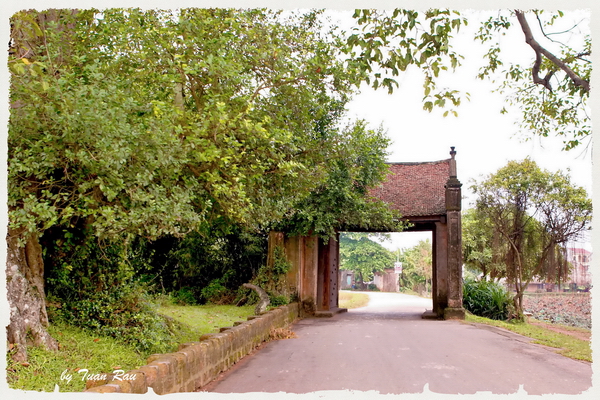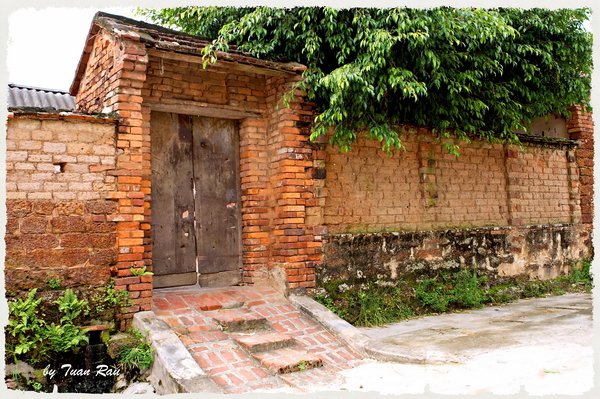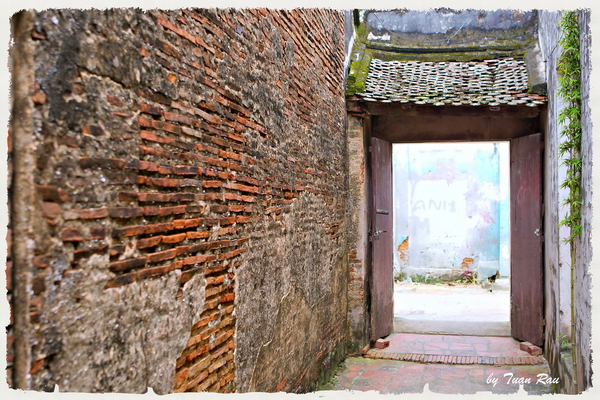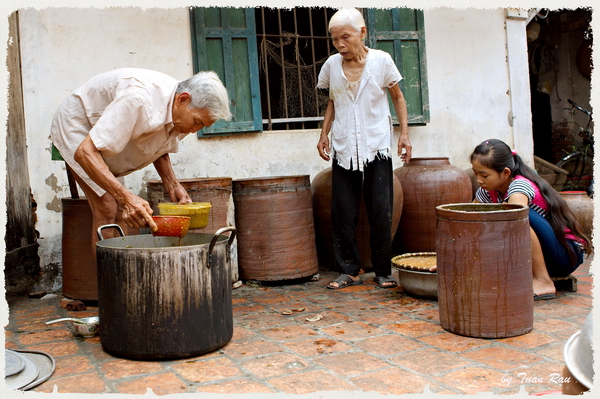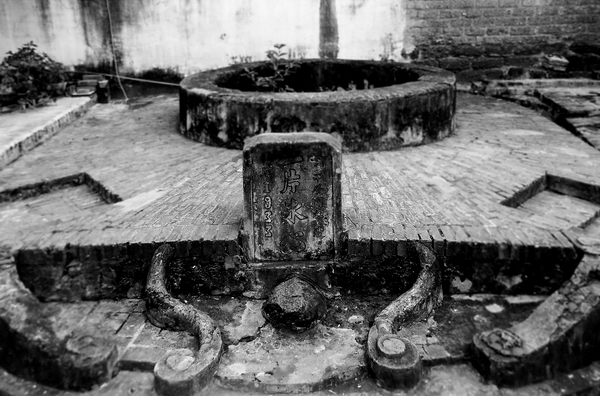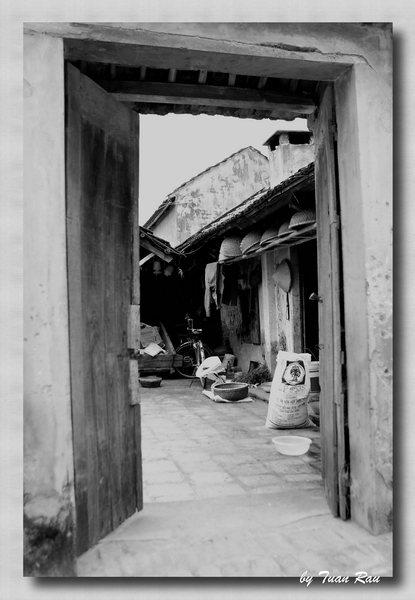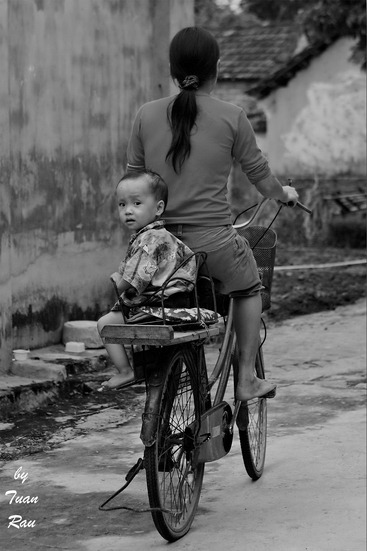Duong Lam is located in Son Tay town, Hanoi. When mentioning Duong Lam, visitors cannot help but think of Mong Phu village gate which has faded from the weather but still retains the intact architecture of a house with two gable roofs.
Mong Phu Communal House was built in 1684 and is a typical construction imbued with the culture of the Northern countryside. The communal house yard is lower than the surrounding ground level, so when it rains, water flows into the yard and then drains out through two drains on the side, creating the image of two dragon whiskers.
L StreetThere are 956 traditional houses in the area. The oldest house, over 400 years old, still preserves a prayer in Chinese characters written in ink on a board.
The characteristic of traditional ancient houses here is that they are all built from laterite blocks.
The pink trellis covers a peaceful, poetic countryside yard.
Soy sauce making in Duong Lam has existed since ancient times and every house has a few jars of soy sauce drying in the yard.
The quality of the village's soy sauce is not inferior to that of Ban village (Hung Yen), Cu Da village (Thanh Oai, Ha Tay...). People use soy sauce as a dipping sauce for boiled morning glory, buffalo meat, beef, and braised fish. There are also dishes such as eggplant in soy sauce, pickled radish, etc.
The ancient wells are an indispensable part of the cultural heritage of Duong Lam village. The wells are not surrounded by walls but are built with rough, dark brown laterite blocks that are very durable and sturdy.
Behind the rough gate is the simple, ordinary life of households.
AndBicycles still roll smoothly on the village road in Duong Lam.






